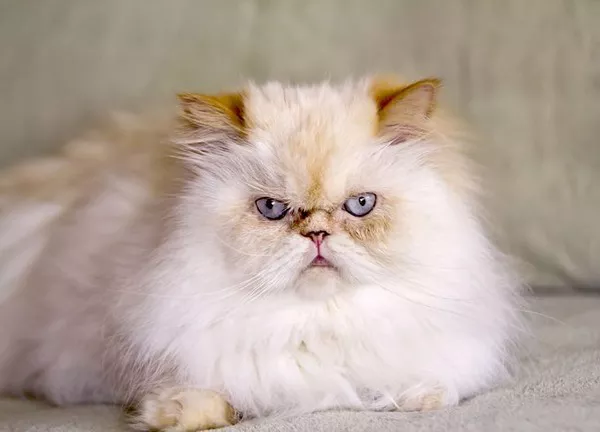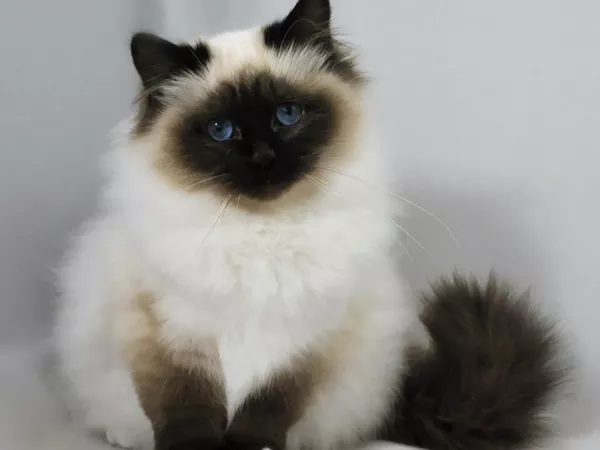The world of feline companionship is filled with curious nuances, and the question of whether Himalayan cats like water is a topic that has intrigued cat owners for generations. The Himalayan cat, known for its regal appearance and gentle demeanor, has a reputation for being meticulous groomers. However, the extent of their affinity or aversion to water remains a subject of exploration. In this comprehensive exploration, we delve into the complex relationship between Himalayan cats and water, exploring the factors that influence their reactions, dispelling myths, and offering insights into how cat owners can navigate water-related experiences with their Himalayan companions.
Understanding Feline Grooming Instincts
1. Meticulous Groomers: Feline Self-Care
Cats, by nature, are meticulous groomers. Their tongues, equipped with tiny, hook-like structures called papillae, are adept at cleaning and untangling their fur. This self-grooming behavior is essential not only for maintaining cleanliness but also for regulating body temperature and distributing natural oils. The Himalayan cat, with its long and luxurious coat, is no exception to this feline grooming instinct.
2. Water Avoidance: Evolutionary Roots
The aversion to water displayed by many cats, including Himalayans, is believed to have evolutionary roots. Wild ancestors of domestic cats were not typically exposed to large bodies of water and did not need to swim for survival. As a result, domestic cats may carry a genetic predisposition to avoid water, a behavior that persists in many modern feline companions.
Factors Influencing Himalayan Cats and Water
1. Individual Personality Variations: The Cat Factor
While there are general trends in feline behavior, it’s essential to recognize that individual cats have unique personalities and preferences. Some Himalayan cats may display a curiosity or tolerance for water, while others may vehemently resist any aquatic encounters. Understanding and respecting the individual nature of your cat is key to navigating their relationship with water.
2. Early Experiences: Formative Influences
The early experiences of a Himalayan cat can significantly influence its attitude toward water. Cats that are introduced to water in a positive and gradual manner during their kittenhood may develop a more accepting attitude. Conversely, traumatic experiences or forced interactions with water can create a lasting aversion.
3. Breed-Specific Traits: The Himalayan Perspective
While individual personality plays a crucial role, certain breed-specific traits can influence a Himalayan cat’s reaction to water. The Himalayan breed, being a cross between Persian and Siamese cats, inherits traits from both parent breeds. Persians, known for their long fur and meticulous grooming habits, may be more cautious around water, while the Siamese influence may introduce a higher level of curiosity.
Dispelling Myths About Himalayan Cats and Water
1. Myth: All Cats Hate Water Equally
Contrary to popular belief, not all cats share an equal aversion to water. While many cats may display an initial reluctance or discomfort when faced with water, individual reactions can vary widely. Some cats may tolerate or even enjoy water-related activities when introduced gradually and positively.
2. Myth: Bathing is Harmful to a Himalayan’s Coat
Another common myth is that bathing Himalayan cats is harmful to their luxurious coat. In reality, regular and appropriate grooming practices, including occasional baths, can contribute to the overall health and appearance of the Himalayan’s coat. Using cat-friendly shampoos and ensuring thorough drying afterward helps maintain the coat’s luster without causing harm.
3. Myth: All Himalayans Dislike Water Equally
Just as with other cat breeds, individual Himalayan cats may have different reactions to water. While some may express a strong aversion, others might display curiosity or tolerance. It’s crucial for cat owners to approach water-related activities with an understanding of their cat’s unique personality and preferences.
Navigating Water Experiences with Himalayan Cats
1. Gradual Introductions: Building Trust
For cat owners hoping to introduce their Himalayan cats to water, the key is gradual and positive introductions. Start by placing small amounts of water in a shallow container and allow the cat to explore at its own pace. Positive reinforcement in the form of treats or praise can help build trust and create a more favorable association with water.
2. Grooming Practices: Bathing with Care
Occasional bathing is a part of grooming practices for long-haired cat breeds like the Himalayan. When bathing your Himalayan cat, use cat-specific shampoos, and ensure the water temperature is lukewarm. Approach the process with calmness and patience, and be prepared to stop if your cat becomes stressed. Drying thoroughly and providing treats afterward can help create a positive experience.
3. Water-Related Play: Encouraging Exploration
Some Himalayan cats may enjoy water-related play, such as batting at floating toys or chasing water droplets. These activities can be introduced gradually during playtime, allowing the cat to engage with water in a more interactive and positive context.
4. Respecting Limits: Recognizing Boundaries
It’s crucial to recognize and respect a Himalayan cat’s limits when it comes to water. Forcing a cat into water or subjecting them to stressful water-related experiences can create lasting aversions and negatively impact the bond between the cat and its owner. Pay attention to your cat’s cues and be mindful of their comfort level.
Tips for Maintaining Himalayan Cat Hygiene
1. Regular Brushing: Preventing Matting and Tangles
Due to their long and luxurious coat, Himalayan cats benefit from regular brushing to prevent matting and tangles. Brushing not only helps maintain the coat’s appearance but also reduces shedding and minimizes the risk of hairballs. Establishing a consistent grooming routine from an early age contributes to a positive association with grooming activities.
2. Eye Care: Addressing Tear Stains
Himalayan cats are prone to tear stains due to their facial structure. Regular eye cleaning with a damp cloth can help prevent tear stains and keep their eyes clear and healthy. Gentle and consistent eye care ensures that your Himalayan cat’s vision is not obstructed by accumulated debris.
3. Dental Health: Prioritizing Oral Care
Dental health is crucial for Himalayan cats, as they can be prone to dental issues. Regular dental care, including tooth brushing and providing dental treats or toys, helps prevent oral problems and contributes to the overall well-being of your feline friend.
4. Maintaining a Clean Environment: Respiratory Health
Himalayan cats, with their brachycephalic facial structure, may be more susceptible to respiratory challenges. Keeping their living environment clean, free from dust and allergens, contributes to respiratory health and minimizes the risk of respiratory issues.
Conclusion
The relationship between Himalayan cats and water is a nuanced and individualized aspect of feline behavior. While the breed, like many others, may exhibit a general aversion to water due to evolutionary factors, individual personalities, early experiences, and gradual introductions play significant roles in shaping their reactions.
As cat owners, it’s essential to approach water-related activities with sensitivity, respect for the cat’s boundaries, and an understanding of their unique preferences. By dispelling myths, acknowledging individual variations, and implementing positive reinforcement, cat owners can navigate water-related experiences with their Himalayan companions in a way that enhances their well-being and strengthens the bond between feline and human. Ultimately, whether your Himalayan cat embraces water adventures or prefers to stay dry, the key is to appreciate and celebrate their unique personalities and the joy they bring to your household.

























